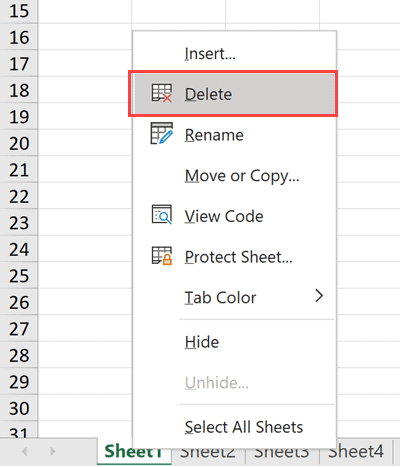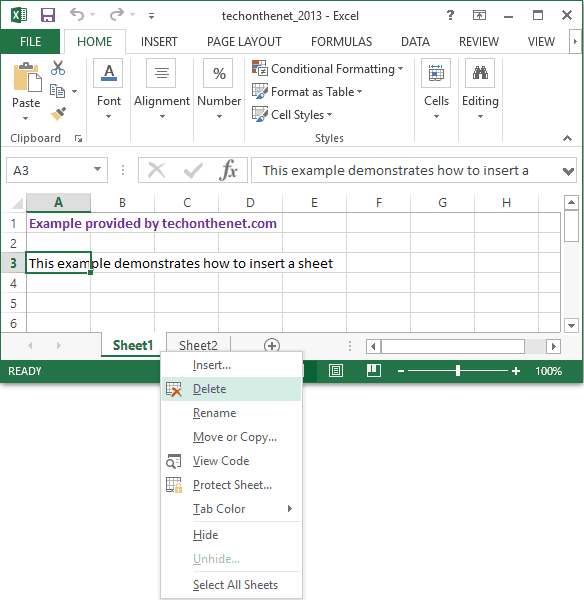5 Easy Python Scripts to Delete Excel Sheets

Understanding the Need for Excel Sheet Management

Excel remains a pivotal tool for businesses, researchers, and individuals dealing with vast data sets. Despite its utility, managing Excel files often becomes a cumbersome task, particularly when it comes to deleting unnecessary sheets within workbooks. Deleting sheets can streamline your Excel file, making it more manageable and reducing the risk of confusion or accidental editing. This task, which might seem straightforward, can become repetitive and time-consuming when dealing with multiple sheets or files.
Why Use Python for Excel Sheet Management?

Python, with its simplicity and powerful libraries like openpyxl and pandas, offers a programmable way to automate these tasks. Here’s why Python is the go-to language for such operations:
- Efficiency: Automate repetitive tasks, freeing up time for more critical work.
- Flexibility: Customizable scripts for different scenarios, from simple deletions to complex file management.
- Scalability: Handle single files or batches of Excel files with ease.
- Integration: Python can integrate with other tools, making it a versatile solution for data manipulation.
Getting Started with Python Scripts for Excel

To harness the power of Python for Excel management, you’ll first need to set up your environment:
- Install Python if you haven’t already.
- Install the necessary libraries:
pip install openpyxl pandasHere’s how you can begin with these five scripts to delete Excel sheets effortlessly:
Script 1: Delete a Specific Sheet by Name

This script is ideal for when you know the exact name of the sheet you want to remove:
import openpyxldef delete_sheet_by_name(file_path, sheet_name): workbook = openpyxl.load_workbook(file_path) if sheet_name in workbook.sheetnames: workbook.remove(workbook[sheet_name]) workbook.save(file_path) else: print(f”Sheet ‘{sheet_name}’ not found.“)
delete_sheet_by_name(‘your_excel_file.xlsx’, ‘Sheet1’)
Script 2: Delete Sheets Starting with a Prefix

This script deletes all sheets in an Excel file that start with a specific prefix. This can be handy when you’ve named sheets with a common pattern:
import openpyxldef delete_sheets_by_prefix(file_path, prefix): workbook = openpyxl.load_workbook(file_path) sheets_to_remove = [sheet for sheet in workbook.sheetnames if sheet.startswith(prefix)] for sheet_name in sheets_to_remove: workbook.remove(workbook[sheet_name]) workbook.save(file_path)
delete_sheets_by_prefix(‘your_excel_file.xlsx’, ‘Report’)
Script 3: Delete Sheets Containing a Keyword

When sheets might not follow a specific naming convention, this script allows you to delete sheets containing any keyword:
import openpyxldef delete_sheets_by_keyword(file_path, keyword): workbook = openpyxl.load_workbook(file_path) sheets_to_remove = [sheet for sheet in workbook.sheetnames if keyword.lower() in sheet.lower()] for sheet_name in sheets_to_remove: workbook.remove(workbook[sheet_name]) workbook.save(file_path)
delete_sheets_by_keyword(‘your_excel_file.xlsx’, ‘Old Data’)
Script 4: Batch Delete Sheets from Multiple Excel Files

If you’re dealing with multiple Excel files and need to delete the same sheet from all of them, this script simplifies the process:
import openpyxl import osdef batch_delete_sheet(directory, sheet_name): for filename in os.listdir(directory): if filename.endswith(‘.xlsx’): file_path = os.path.join(directory, filename) workbook = openpyxl.load_workbook(file_path) if sheet_name in workbook.sheetnames: workbook.remove(workbook[sheet_name]) workbook.save(file_path) print(f”Sheet ‘{sheet_name}’ removed from {filename}“) else: print(f”Sheet ‘{sheet_name}’ not found in {filename}“)
batch_delete_sheet(‘/path/to/your/directory’, ‘Sheet1’)
Script 5: Conditionally Delete Sheets Based on Content

The most complex of the bunch, this script lets you delete sheets based on their content, for instance, if a specific cell matches a certain value:
import openpyxldef conditionally_delete_sheet(file_path, condition_cell, condition_value): workbook = openpyxl.load_workbook(file_path) sheets_to_remove = [] for sheet in workbook.worksheets: cell_value = sheet[condition_cell].value if str(cell_value).strip().lower() == str(condition_value).strip().lower(): sheets_to_remove.append(sheet) for sheet in sheets_to_remove: workbook.remove(sheet) workbook.save(file_path)
conditionally_delete_sheet(‘your_excel_file.xlsx’, ‘A1’, ‘Delete Me’)
Each script provides a different level of control and automation, making Excel sheet management significantly more efficient. By automating these processes, you not only save time but also reduce the potential for human error, which is particularly beneficial when dealing with large datasets or when managing data for businesses or research purposes.
⚠️ Note: Always ensure you have a backup of your Excel files before running these scripts, as they make permanent changes to the file structure.
Summary

In today’s data-driven environment, efficiency in managing data is critical. These Python scripts illustrate how you can harness the power of automation to streamline Excel sheet management. From deleting specific sheets by name, managing multiple files, to conditionally deleting sheets based on their content, Python provides versatile solutions tailored to various needs. The application of such automation tools not only increases productivity but also minimizes the risk of data mishandling. As data continues to grow in volume and complexity, tools like these become indispensable for maintaining data integrity and organization.
Can these scripts be used on macOS or Linux?

+
Absolutely! Python is platform-agnostic, meaning these scripts will work on any operating system that has Python installed, including macOS, Linux, and Windows.
What if I need to delete sheets based on more complex conditions?

+
You can modify the scripts, particularly Script 5, to include more sophisticated conditions using Python’s rich set of libraries like re for regular expressions or pandas for data manipulation.
Is there a way to undo the deletion of a sheet?

+
These scripts make permanent changes to your Excel files. Therefore, always maintain backups or ensure you have versions of your Excel files before running these scripts. There’s no built-in undo feature for the scripts as provided.



